Hướng dẫn về các tạp chí Truy cập Mở
Lê Trung Nghĩa
2019-10-16T05:58:53+07:00
2019-10-16T05:58:53+07:00
https://letrungnghia.mangvn.org/Education/huong-dan-ve-cac-tap-chi-truy-cap-mo-6281.html
/themes/default/images/no_image.gif
Blog FOSS by Lê Trung Nghĩa
https://letrungnghia.mangvn.org/uploads/letrungnghia/le-trung-nghia.png
Thứ tư - 16/10/2019 05:58
Guide to Open Access Journals
Theo: https://www.onlineschools.org/open-access-journals/
Xem thêm: Khoa học Mở - Open Science
Theo truyền thống, các sinh viên đại học đã bỏ ra nhiều đêm dài trong các thư viện các khu trường lật giở qua các tập bìa da của các tạp chí học thuật và báo cáo nghiên cứu. Tầm quan trọng của các xuất bản phẩm đó đã vẫn còn nguyên vẹn trong nhiều năm qua, nhưng hầu hết các sinh viên am hiểu công nghệ ngày nay đều chọn truy cập thông tin này bằng việc sử dụng các cơ sở dữ liệu trên trực tuyến.
Các trang đó thường nằm trong 2 chủng loại. Một số cơ sở dữ liệu đòi hỏi đăng ký phải trả tiền để truy cập các tư liệu. Trong nhiều trường hợp, các sinh viên dự tuyển vào các cơ sở bằng gạch - vữa được trao quyền truy cập bổ sung tới các trang đó khi được tuyển mộ. Các trang khác, được biết tới như là các cơ sở dữ liệu “truy cập mở”, cho phép những người sử dụng ngâm mình vào trong các hạng mục của tạp chí một cách miễn phí. Các trang đó là lý tưởng cho các sinh viên trên trực tuyến, những người nếu khác có lẽ sẽ phải tự trả các hóa đơn thuê bao.
Hướng dẫn này xem xét vài website tạp chí truy cập mở có uy tín nhất, cũng như các cơ sở dữ liệu thuê bao phải trả tiền vẫn còn được các sinh viên đại học truyền thống sử dụng một cách rộng rãi.
Các tạp chí truy cập mở cốt lõi
Xem bản dịch đã đăng tại: http://giaoducmo.avnuc.vn/truy-cap-mo/cac-tap-chi-truy-cap-mo-cot-loi-51.html
Các tạp chí truy cập mở theo chủ đề
Xem bản dịch đã đăng tại: http://giaoducmo.avnuc.vn/truy-cap-mo/cac-tap-chi-truy-cap-mo-theo-chu-de-52.html
Các tạp chí dựa vào thuê bao
2 trang tạp chi sau đây yêu cầu thuê bao phải trả tiền để truy cập tới các hạng mục được lưu trữ trong các cơ sở dữ liệu trên trực tuyến của chúng. Trong khi không trang nào sẽ là lựa chọn đặc biệt phù hợp cho các sinh viên trên trực tuyến và các cá nhân khác về ngân sách, nên được lưu ý là từng trang trong số chúng có thư viện khổng lồ các tài nguyên có giá trị - và đối với nhiều bài báo, các tóm tắt chi tiết (điều có thể được suwr5 dụng trong các trích dẫn) là sẵn sàng không mất tiền.
1. JSTOR: Viết tắt của Lưu trữ Tạp chí (Journal Storage), JSTOR đã phát triển và trở thành một trong những cơ sở dữ liệu tạp chí dựa vào thuê bao nổi tiếng nhất. Cơ sở dữ liệu này trao cho những người sử dụng khả năng tiến hành các tìm kiếm toàn văn của hơn 2.000 tạp chí, và trang này hiện được khoảng 8.000 cơ sở ở 160 quốc gia khác nhau sử dụng. Truy cập đầy đủ tới thư viện trên trực tuyến của JSTOR đòi hỏi phải trả tiền thuê bao hoặc thanh toán một lần (hầu hết chi phí các bài báo riêng rẽ nằm trong khoảng 10 USD và 50 USD), nhưng trong 2 năm vừa qua, trang đã làm cho tất cả các bài báo trong phạm vi công cộng là sẵn sàng không mất tiền cho những người sử dụng web. Dù chỉ 6% các nội dung của JSTOR được phân loại như là ‘phạm vi công cộng’, điều này vẫn tạo thành hàng trăm ngàn mục từ từ hơn 200 tạp chí khắp trên thế giới.
Đối với một cơ sở dữ liệu mở rộng như vậy, chức năng tìm kiếm của JSTOR là khá trực tiếp. Các tìm kiếm cơ bản có được các kết quả dựa vào các từ khóa, trong khi các lựa chọn cao cấp cho phép những người sử dụng lọc các hạng mục theo ngày tháng, ngôn ngữ, nhà xuất bản, Số Sách Tiêu chuẩn Quốc tế - ISBN (International Standard Book Number), định dạng (bài báo, sách, sách mỏng, hoặc bản rà soát lại), và hơn 60 chủ đề học thuật. Ngoài ra, MyJSTOR lưu trữ các tìm kiếm trong quá khứ và cho phép những người sử dụng lưu lại và chia sẻ các trích dẫn.
2. Project MUSE: Trang này có khoảng 550 tạp chí học thuật và 20.000 sách điện tử đã được xuất bản khắp trên thế giới. Project MUSE cung cấp truy cập thuê bao tới các thư viện, điều tới lượt nó cho phép các khách hàng có thẻ truy cập miễn phí các tư liệu của trang (miễn là họ sử dụng các máy tính trong mạng các thư viện để làm thế). Ngoài ra, bộ sưu tập các tạp chí truy cập mở của trang này đang tiếp tục phát triển.
Giống như JSTOR, các lựa chọn tìm kiếm trên trang Project MUSE khá là tối giản nhưng dù vậy vẫn hiệu quả. Các tạp chí và sách đều được liệt kê theo vần abc trên từng trang, nhưng các tìm kiếm theo từ khóa lọc các kết quả dựa vào tiêu đề, tác giả, hoặc nhà xuất bản thì bao trùm toàn bộ trang. Đối với những người sử dụng nào đang không truy cập miễn phí Project MUSE ở thư viện địa phương của họ, một lựa chọn tìm kiếm khác cho phép họ hoàn toàn lọc ra các tạp chí và các bài báo truy cập mở.
Trong kỷ nguyên số, các sinh viên có nhiều lựa chọn khi nói về việc duyệt các xuất bản phẩm học thuật. Các sinh viên dạng gạch - và - vữa được trao truy cập tự do không mất tiền tới các trang như JSTOR và Project MUSE là viện lý là được ưu tiên nhất, nhưng sự xuất hiện của các cơ sở dữ liệu truy cập mở đảm bảo rằng tất cả các sinh viên đều có khả năng sử dụng các tạp chí và các bài báo để hỗ trợ cho việc học tập của họ.
Traditionally, college students have spent long nights in campus libraries thumbing through leather bound volumes of academic journals and research reports. The importance of these publications has remained intact over the years, but most of today's tech-savvy students opt to access this information using online databases.
These sites generally fall into two categories. Some databases require a paid subscription in order to access materials. In many cases, students who enroll at brick-and-mortar institutions are granted complimentary access to these sites while enrolled. Other sites, known as “open-access” databases, allow users to delve into journal entries free-of-charge. These sites are ideal for online students who would otherwise be required to foot the subscription bill themselves.
This guide looks at some of the most reputable open-access journal websites, as well as paid subscription databases that are still widely used by traditional college students.
The Core Open Access Journals
While they may not carry the same amount of recognition as their more expensive counterparts, the following open-access databases provide a comparable selection of journals that are highly useful to students across disciplines.
1. Directory of Open Access Journals (DOAJ): Originally established and maintained by Lund University in Sweden, the DOAJ features more than 8,500 open access journals, many of which are sourced from government, commercial, non-profit, and for-profit sources. Following the landmark Budapest Open Access Initiative of 2001 (which established standards for free journal access using online platforms), DOAJ received its initial funding from the Open Access Institute; it has since adopted a business model that relies heavily on donor contributions. An average of four journal entries are added to the database each day.
One major advantage of DOAJ is the site's extensive search engine. A basic search allows users to separate journals from individual articles, while advanced options allow users to sort entries by title, author, keywords, abstract, International Standard Serial Number (ISSN), and other more specific criteria. DOAJ is also touted for its clean interface, detailed FAQ page, and other features designed to provide a positive user experience.
2. Oxford Open: Oxford University is one of the many brick-and-mortar institutions currently making an effort to provide open access to scholarly publications authored by both current students and alumni. While the school has also stated that the significant cost of publishing makes it all but impossible to provide open access to all journals and articles, Oxford Open's database is comprised of archived content from more than 300 publications.
The majority of these journals are fully open access, and the site also provides an array of optional open access entries (articles with publication costs paid by the author) that users may also access free-of-charge. Journals that charge a fee will typically grant free access to journal abstracts, allowing students to make informed purchases. Oxford Open's aggregation system is somewhat basic, but also user-friendly. All journals are listed alphabetically (regardless of their access status), and students may use seven filters (economics, humanities, law, life sciences, mathematical and physical sciences, medicine, and social sciences) to yield more subject-specific results.
3. Wiley Open Access: Articles that appear in the 30 journals hosted by Wiley Open Access database go through a stringent peer review and editorial process, ensuring the quality and longevity of the content.
These journals are concentrated in biology, chemistry, physics, health, and medicine. While the content of these publications is completely free for readers, authors who wish to publish their own work in these journals and provide open access to the public must pay a nominal fee (roughly $3,000) that is used to cover the costs of publication.
The site's aggregator allows users to search for topics across all 30 publications, limit their findings to one specific journal, or browse results from other publications in the Wiley network. Wiley Online Library consists of more than 4 million journal articles and books that cover every conceivable academic topic; while the library is not exclusively open-access, much of the work found in the database is free to read.
4. OMICS Group: More than 300 open-access scientific journals are housed in this database, with a readership of roughly 3 million users. Much like Wiley Open Access, the entries made available by OMICS Group must undergo a rigorous peer-review process prior to their publication. Another similarity is the funding model, which relies on payment from authors who wish to publish their work and make it openly accessible to readers. However, the OMICS group structures its prices to accommodate writers across the globe; contributors from “low income countries” pay $900-$1,800 per article; individuals from “middle income countries” pay $1,300-$2,600 per submission; and authors from “high income countries” pay $1,800-$3,600.
Site visitors can browse journals alphabetically, or narrow their search using nine subject filters. While the majority of these journals focus on life and medical sciences, dozens of others are concentrated in fields like pharmacology, environmental science, management, and engineering. Additionally, the organization sponsors more than 100 international conferences on an annual basis; these gatherings allow students to meet leaders in the scientific and academic communities, as well as faculty members and fellow students.
5. AGRIS: While this site might not be useful for every student, it is an invaluable resource for those majoring in fields like resource management, public health, economics, forestry, and crop management. AGRIS is administered by the Food and Agriculture Organization, a branch of the United Nations committed to fighting world hunger. The site contains millions of published articles, as well as an extensive collection of ‘grey' (or unpublished) literature from more than 100 different countries.
In response to widespread criticism of the site's aggregating capabilities, AGRIS today allows users to perform highly customized searches. Basic keyword searches may be filtered by submission date or relevance, while advanced options sort findings by the country of origin, language, author, journal, and more than a dozen other qualifiers. Additionally, authors who register with the site can submit their own work using the AGRIMetaMaker tool.
Open Access Journals by Subject
The following list includes some of the most renowned, open-access journals for five specific academic fields: business, computer science, education, engineering, and psychology. However, their value is certainly not limited to students earning those specific degrees; each site features an archive of cross-disciplinary articles, research reports, literature reviews, and case studies ― all of which are free-of-charge for readers.
Business
Accounting and Finance Research (AFR): This peer-reviewed journal (administered by Sciedu Press) features theoretical articles that cover various topics relating to the fields of accounting and corporate finance. The most recent issue (Fall 2013) addressed the efficacy of charitable donations and analyzed the role of foreign banks in the Chinese economy. Authors who contribute to AFR must pay a $300 processing fee.
American Journal of Economics and Business Administration: This quarterly journal has been part of the Science Publications (SCIPUB) canon since 2009. Articles from the most recent issue include ‘Retail Bankruptcy Prediction,' ‘Achieving Business Sustainability Via I-Top Model,' and ‘Single-Digit Inflation Targeting and Economic Growth.' Contributing authors who are not registered with SCIPUB (the organization that oversees this journal, along with more than two dozen other publications) must pay $75 per page for the first eight pages of their submission, while SCIPUB members pay $40 per page for the same amount; after the eight-page benchmark has been reached, all authors must pay $100 for each subsequent page.
International Journal of Marketing Studies: Sponsored by the Canadian Center of Science and Education, this journal features hundreds of archived articles published between 2009 and 2012; IJSM initially appeared bi-annually, but is today published on a bi-monthly basis. The journal's central focus is marketing management and strategy, but each volume contains a wide array of specialized analyses; the most recent issue explored sustainable business practices of Turkey, compared U.S. advertising students to their Korean counterparts, and examined the quality of air cargo services in the United Arab Emirates. Contributing authors must pay a fee of $300 for each article submission.
Journal of Entrepreneurship & Organization Management: This journal is still in its infancy; the inaugural issue first appeared in December 2012, and the site currently hosts five articles. However, the site features five additional “articles in press”; furthermore, nine forthcoming special issues will tackle topics like ‘Social Entrepreneurship,' ‘Corporate Governance and Business Ethics,' and ‘Multinational Business Policy.' Contributing authors who wish to submit to either the standard publication or a special issue must pay a $700 for each draft.
Modern Economy (ME): Debuting as a quarterly journal in 2010, ME is currently published monthly; in addition, two special issues that tackled the recession and marketing management, respectively, appeared earlier this year. The journal covers a wide range of topics related to international economics, from agent-based models and exchange rates to sustainable development and trade patterns. Authors who wish to submit their work must pay $600 for the first 10 pages of their draft, with an additional $50 charge for each subsequent page.
Computer Science
Computational Intelligence in Neuroscience: This “forum for the interdisciplinary field of neural computing, neural engineering and artificial intelligence” features work from scientists, engineers, mathematicians, and other technology experts around the world. The journal's archive features nearly 200 individual articles dating back to 2007. Unlike most peer-reviewed journals, the CIN does not charge authors any fees to publish their work.
Computer Science and Information Systems (ComSIS): This journal (with an archive dating back to 2004) features both theoretical analyses of computational foundations and articles that explore the economic and educational aspects of the modern tech industry. The most recent issue (June 2013) features a handful of papers covering various topics, as well as two special sections devoted to intelligent information processing and IT in medicine and rehabilitation. There is no limit to the number of articles one author may contribute, but submissions may not exceed 20 pages.
International Journal of Information Security Science (IJISS): “Security science, engineering, and technology” is the central focus of this journal that has been published quarterly since March 2012. The current archive features six issues; recent entries have discussed security concerns linked to cryptographic schemes, standards of information security risks, and ways to optimize intrusion detection systems. Each submission is reviewed by at least two editors, and the revision process may last up to two months.
Journal of Artificial Intelligence Research: Considered one of the first exclusively electronic journals, JAIR first appeared in 1993. The site's archive contains hundreds of articles (housed in 47 volumes) that explore various trends, theories, and innovations related to the global AI industry. Each submission must undergo a blind peer-review process that may last up to three months; however, contributing authors are not required to pay a fee.
Journal of Information Security (JIS): Published since 2010, the JIS examines the development, evaluation, and implementation of various online security models used to protect sensitive information and data. The most recent issue discussed security concerns related to mobile devices and identity authentication tools, as well as ‘2D Conjugate Maps of DNA Sequences.' Authors must pay $500 for the first 10 pages of each draft, and $50 for each additional page. Discounts of 50% or 100% will be applied to contributors from certain ‘developing' nations.
Education
American Educator: One of the most extensive journals currently available to web users, American Educator's archive contains more than 70 quarterly publications dating back to 1977. While the journal has historically covered a diverse range of topics, most articles are devoted to three central themes: technology and innovation in the classroom, evaluative methods used by educators, and student outcome trends and strategies. Contributing authors pay a fee that reflects the length of their submission; the minimum cost is $300 per draft.
Current Issues in Education: Three types of articles are published in this journal: research studies, literature reviews, and outcome-oriented analyses. The bulk of archived articles take an ethnographic approach by exploring the relationship between educational trends, strategies, policies and gender, race, and socioeconomic factors. Submissions are limited to 40 pages, and the blind peer-review process may last up to 10 months. But authors are not required to pay any sort of processing fee for their work to appear in the journal.
Early Childhood Research & Practice (ECRP): First established in 1999, the ECRP is today considered one of the Internet's leading multilingual, education-based journals. Articles explore various strategies for teaching elementary school learners, as well as studies related to students belonging to specific demographics (such as special needs learners or low-income families). Authors may submit drafts in either English or Spanish; the journal's blind peer-review process of a given article may take up to one year.
International Journal of Special Education (IJSE): Published exclusively online since 2002, the IJSE publishes three issues per calendar year. Articles cover both experimental and theoretical approaches to special education found across the globe, as well as trends associated with various demographics; the most recent issue explored ADHD statistics among Native American students, analyzed concerns faced by Korean-American families with deaf children, and evaluated the efficacy of sex education in Saudi Arabia. The site does not charge a processing fee for contributors, but authors are asked to submit anonymous manuscripts.
Journal of Learning Development in Higher Education (JLDHE): Administered by the Association for Learning Development in Higher Education (ALDinHE), this journal seeks to examine the relationship between college curricula and student outcomes. One volume per year has been published since 2009; in addition, special issues have focused on writing skills in STEM-related courses and the practice of learning development planning. Authors are invited to submit four types of articles: research papers, case studies, editorial pieces, and literature reviews. There is currently no processing fee for contributing writers.
Engineering
Advances in Chemical Engineering and Science (ACES): This journal features articles that address molecular assembly, nanotechnology, and other concerns related to the development, production, and evaluation of various chemicals. The archive contains quarterly volumes dating back to 2011, as well as special issues devoted to supramolecular chemistry, advances in environmental chemistry, and carbon chemicals. Contributors are required to pay a $600 fee for the first 10 pages of their submission, and $50 for each additional page; contributors who live outside the developed world may receive a discount of 50% or 100% on their submission fee.
Circuits and Systems: Established in 2010, this journal focuses on two of the most fundamental aspects of modern technology as they relate to computer-aided design (CAD), nanoelectronics, telemedicine, and other disciplines; short reports and literature reviews are also published. Authors who wish to submit articles to the site must pay $600 for the first 10 pages of their draft, and $50 for each additional page; a discount of 50% or 100% will be awarded to contributors from most ‘developing' countries.
Journal of Bioengineering & Biomedical Science: This journal specializes in reports and reviews that discuss disease pathology, medical treatments, and health management. The archive contains quarterly issues dating back to 2011, as well as special volumes that focus on topics like regenerative medicine and emerging technologies in the fields of bioengineering and rehabilitative therapy. Authors who wish to submit a report or review must pay a fee of $1,500.
The Open Electrical & Electronic Engineering Journal: The articles, reviews, and editorials published in this journal cover a wide swath of topics associated with electrical and electronic engineering. Recent issues have explored x-ray detection, cooperative communication systems, network coupling, and duty cycle division multiplexing; in addition, a special issue released in 2013 was devoted to trends in signal processing and electronics engineering. Authors are invited to submit letters, research articles, and product or literature reviews; the processing fee varies from $450 to $900 per draft (depending on the type of work submitted). Several e-books are also available for purchase on the site.
The Open Journal of Mechanical Engineering: Published since 2007, this journal explores various problems related to mechanical engineering, such as industrial carbon emission output, longitudinal residual stress during friction stir welding, and stress and fatigue of vehicular engine components. Contributing authors are required to pay a processing fee of $450-900; the price will depend on the type of work submitted (letter, research study, or review).
Psychology
BMC Psychology: This all-encompassing journal publishes articles related to “developmental, clinical, cognitive, experimental, social, evolutionary and educational psychology, as well as personality and individual differences.” The archive features pieces that address topics like sex discrimination due to visual cues, culture-specific cognitive therapy techniques, and the short- and long-term effects of depressive symptoms. Contributing authors are required to pay a $2,000 processing fee; however, this cost is waived for citizens of many developing countries, as well as writers whose institution is registered with BioMed Central (the organization that oversees the site).
Child and Adolescent Psychiatry and Mental Health (CAPMH): The archive of this journal dates back to 2007, and contains more than 200 research reports, case reports, editorials, and letters. CAPMH is geared toward psychologists, pediatricians, neuroscientists, and other individuals in the field. Many articles focus on niche groups of children and adolescents; recently published pieces examined the role of psychiatry within youth welfare organizations, explored treatments for young people with autism or Asperger's syndrome, and noted the ‘prevalence' of ADD and ADHD among children in Turkey. Authors who wish to contribute to this journal must pay a fee of $1,730 per article.
Evolutionary Psychology: Dating back more than a decade, this extensive journal specializes in articles and case studies that either bolster previous findings related to evolutionary psychology or seek to inform the public about emerging technologies. Many entries explore contemporary trends, such as drinking games and blind dates, as they relate to society and human behavior. Authors who submit their work are not required to pay a processing fee, but all contributors must provide a statement of ‘ethical treatment' for all participants in their respective study or report.
Journal of Alcoholism and Drug Dependence: Addiction treatment and management is one of today's fastest growing psychology sub-fields. This journal (which debuted in January 2013) primarily explores various theories and strategies related to alcohol and drug dependence; recently covered topics include GHB addiction, ethanol consumption, and marijuana poisoning. Authors are invited to submit research studies, reports, literature reviews, and other articles for a processing fee of $900.
Mental Illness: This peer-reviewed journal publishes editorials, feature-length articles, and case reports that relate to the diagnosis, treatment, and management of mental illnesses. Topics covered in the inaugural 2013 volume include the link between schizophrenia and violent behavior in children, mental health of male Internet users actively seeking sexual partners, and the effects of severe depression. Archived content contains six full issues, and dates back to 2009; authors are invited to submit work to the site free-of-charge.
Subscription-Based Journals
The following two journal sites require a paid subscription to access the entries stored in their online databases. While neither of these will be a particularly suitable option for online students and other individuals on a budget, it should be noted that they each contain a vast library of valuable resources ― and for many of the articles, detailed abstracts (which may be used in citations) are available free-of-charge.
1. JSTOR: Short for Journal Storage, JSTOR has grown to become one of the most renowned subscription-based journal databases. The database gives users the ability to conduct full-text searches of more than 2,000 journals, and the site is currently used by roughly 8,000 institutions in 160 different countries. Full access to JSTOR's online library requires a paid subscription or onetime payment (most individual articles cost between $10 and $50), but in the last two years, the site has made all public domain articles available at no charge to web users. Although only 6% of JSTOR's content is classified as ‘public domain', this still constitutes hundreds of thousands of entries from more than 200 journals worldwide.
For such an extensive database, JSTOR's search functionality is fairly straightforward. Basic searches yield results based on keywords, while advanced options allow users to filter entries by date, language, publisher, International Standard Book Number (ISBN), format (article, book, pamphlet, or review), and more than 60 academic subjects. In addition, MyJSTOR archives past searches and allows users to save and share citations.
2. Project MUSE: This site contains roughly 550 academic journals and 20,000 electronic books that have been published across the globe. Project MUSE provides subscription access to libraries, which in turn allow card-carrying patrons to access the site's materials free-of-charge (provided they use computers within the library's network to do so). In addition, the site's collection of open-access journals is continuing to grow.
Like JSTOR, search options on the Project MUSE site are somewhat minimalistic but nonetheless effective. Journals and books are both listed alphabetically on individual pages, but keyword searches that filter results based on title, author, or publisher cover the entire site. For users who are not accessing Project MUSE free-of-charge at their local library, another search option allows them to exclusively filter open-access journals and articles.
In the digital age, students have plenty of options when it comes to browsing academic publications. Brick-and-mortar students who are granted free access to sites like JSTOR and Project MUSE are arguably the most privileged, but the advent of open-access databases ensures that all students are able to use journals and articles to assist their studies.
Dịch: Lê Trung Nghĩa
letrungnghia.foss@gmail.com
 DigComp 3.0: Khung năng lực số châu Âu
DigComp 3.0: Khung năng lực số châu Âu
 Các bài toàn văn trong năm 2025
Các bài toàn văn trong năm 2025
 Các bài trình chiếu trong năm 2025
Các bài trình chiếu trong năm 2025
 Các lớp tập huấn thực hành ‘Khai thác tài nguyên giáo dục mở’ tới hết năm 2025
Các lớp tập huấn thực hành ‘Khai thác tài nguyên giáo dục mở’ tới hết năm 2025
 Tập huấn thực hành ‘Khai thác tài nguyên giáo dục mở’ cho giáo viên phổ thông, bao gồm cả giáo viên tiểu học và mầm non tới hết năm 2025
Tập huấn thực hành ‘Khai thác tài nguyên giáo dục mở’ cho giáo viên phổ thông, bao gồm cả giáo viên tiểu học và mầm non tới hết năm 2025
 Các tài liệu dịch sang tiếng Việt tới hết năm 2025
Các tài liệu dịch sang tiếng Việt tới hết năm 2025
 Loạt bài về AI và AI Nguồn Mở: Công cụ AI; Dự án AI Nguồn Mở; LLM Nguồn Mở; Kỹ thuật lời nhắc;
Loạt bài về AI và AI Nguồn Mở: Công cụ AI; Dự án AI Nguồn Mở; LLM Nguồn Mở; Kỹ thuật lời nhắc;
 Tổng hợp các bài của Nhóm các Nhà cấp vốn Nghiên cứu Mở (ORFG) đã được dịch sang tiếng Việt
Tổng hợp các bài của Nhóm các Nhà cấp vốn Nghiên cứu Mở (ORFG) đã được dịch sang tiếng Việt
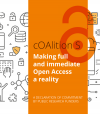 Tổng hợp các bài của Liên minh S (cOAlition S) đã được dịch sang tiếng Việt
Tổng hợp các bài của Liên minh S (cOAlition S) đã được dịch sang tiếng Việt
 Năm Khoa học Mở & Chuyển đổi sang Khoa học Mở - Tổng hợp các bài liên quan
Năm Khoa học Mở & Chuyển đổi sang Khoa học Mở - Tổng hợp các bài liên quan
 Bạn cần biết những gì về các khung năng lực AI mới của UNESCO cho học sinh và giáo viên
Bạn cần biết những gì về các khung năng lực AI mới của UNESCO cho học sinh và giáo viên
 Bàn về 'Lợi thế của doanh nghiệp Việt là dữ liệu Việt, bài toán Việt' - bài phát biểu của Bộ trưởng Nguyễn Mạnh Hùng ngày 21/08/2025
Bàn về 'Lợi thế của doanh nghiệp Việt là dữ liệu Việt, bài toán Việt' - bài phát biểu của Bộ trưởng Nguyễn Mạnh Hùng ngày 21/08/2025
 Khung năng lực AI cho giáo viên
Khung năng lực AI cho giáo viên
 Ngày Phần mềm Tự do, Ngày Phần cứng tự do, Ngày Tài liệu Tự do
Ngày Phần mềm Tự do, Ngày Phần cứng tự do, Ngày Tài liệu Tự do
 ‘Khung năng lực AI cho giáo viên’ - bản dịch sang tiếng Việt
‘Khung năng lực AI cho giáo viên’ - bản dịch sang tiếng Việt
 Mark Zuckerberg: DeepSeek cho thấy vì sao nước Mỹ phải là ‘tiêu chuẩn nguồn mở toàn cầu’ của AI; không có lý do gì để suy nghĩ lại về việc chi tiêu
Mark Zuckerberg: DeepSeek cho thấy vì sao nước Mỹ phải là ‘tiêu chuẩn nguồn mở toàn cầu’ của AI; không có lý do gì để suy nghĩ lại về việc chi tiêu
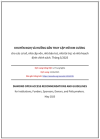 ‘KHUYẾN NGHỊ VÀ HƯỚNG DẪN TRUY CẬP MỞ KIM CƯƠNG cho các cơ sở, nhà cấp vốn, nhà bảo trợ, nhà tài trợ, và nhà hoạch định chính sách’ - bản dịch sang tiếng Việt
‘KHUYẾN NGHỊ VÀ HƯỚNG DẪN TRUY CẬP MỞ KIM CƯƠNG cho các cơ sở, nhà cấp vốn, nhà bảo trợ, nhà tài trợ, và nhà hoạch định chính sách’ - bản dịch sang tiếng Việt
 DeepSeek đã gây ra sự hoảng loạn trên thị trường — nhưng một số người cho rằng việc bán tháo là quá mức
DeepSeek đã gây ra sự hoảng loạn trên thị trường — nhưng một số người cho rằng việc bán tháo là quá mức
 50 công cụ AI tốt nhất cho năm 2025 (Đã thử và kiểm nghiệm)
50 công cụ AI tốt nhất cho năm 2025 (Đã thử và kiểm nghiệm)
 Nhà khoa học AI hàng đầu của Meta cho biết thành công của DeepSeek cho thấy 'các mô hình nguồn mở đang vượt trội hơn các mô hình độc quyền'
Nhà khoa học AI hàng đầu của Meta cho biết thành công của DeepSeek cho thấy 'các mô hình nguồn mở đang vượt trội hơn các mô hình độc quyền'
 “Chúng tôi không có hào nước”: Sự đổi mới đột phá của AI nguồn mở
“Chúng tôi không có hào nước”: Sự đổi mới đột phá của AI nguồn mở
 UNESCO dành Ngày Giáo dục Quốc tế 2025 cho Trí tuệ nhân tạo
UNESCO dành Ngày Giáo dục Quốc tế 2025 cho Trí tuệ nhân tạo
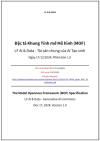 ‘Đặc tả Khung Tính mở Mô hình (MOF)’ của LF AI & Data - Tài sản chung của AI Tạo sinh - bản dịch sang tiếng Việt
‘Đặc tả Khung Tính mở Mô hình (MOF)’ của LF AI & Data - Tài sản chung của AI Tạo sinh - bản dịch sang tiếng Việt
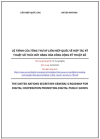 ‘LỘ TRÌNH CỦA TỔNG THƯ KÝ LIÊN HIỆP QUỐC VỀ HỢP TÁC KỸ THUẬT SỐ THÚC ĐẨY HÀNG HÓA CÔNG CỘNG KỸ THUẬT SỐ’ - bản dịch sang tiếng Việt
‘LỘ TRÌNH CỦA TỔNG THƯ KÝ LIÊN HIỆP QUỐC VỀ HỢP TÁC KỸ THUẬT SỐ THÚC ĐẨY HÀNG HÓA CÔNG CỘNG KỸ THUẬT SỐ’ - bản dịch sang tiếng Việt
 AI trong TVET - Một vài gợi ý triển khai trong thực tế
AI trong TVET - Một vài gợi ý triển khai trong thực tế
 Dữ liệu để phân loại AI
Dữ liệu để phân loại AI
 Tài sản chung kỹ thuật số và Hàng hóa Công cộng Kỹ thuật số - Tìm thấy nền tảng chung cho các nhà hoạch định chính sách
Tài sản chung kỹ thuật số và Hàng hóa Công cộng Kỹ thuật số - Tìm thấy nền tảng chung cho các nhà hoạch định chính sách
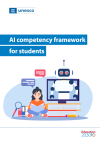 Khung năng lực AI cho học sinh
Khung năng lực AI cho học sinh
 Nếu DeepSeek muốn trở thành một người phá vỡ thực sự, nó phải tiến xa hơn nữa về tính minh bạch của dữ liệu
Nếu DeepSeek muốn trở thành một người phá vỡ thực sự, nó phải tiến xa hơn nữa về tính minh bạch của dữ liệu
 Mark Zuckerberg nói Meta có kế hoạch chi hơn 60 tỷ USD khi Thung lũng silicon hoảng loạn về sự cạnh tranh của AI Trung Quốc
Mark Zuckerberg nói Meta có kế hoạch chi hơn 60 tỷ USD khi Thung lũng silicon hoảng loạn về sự cạnh tranh của AI Trung Quốc